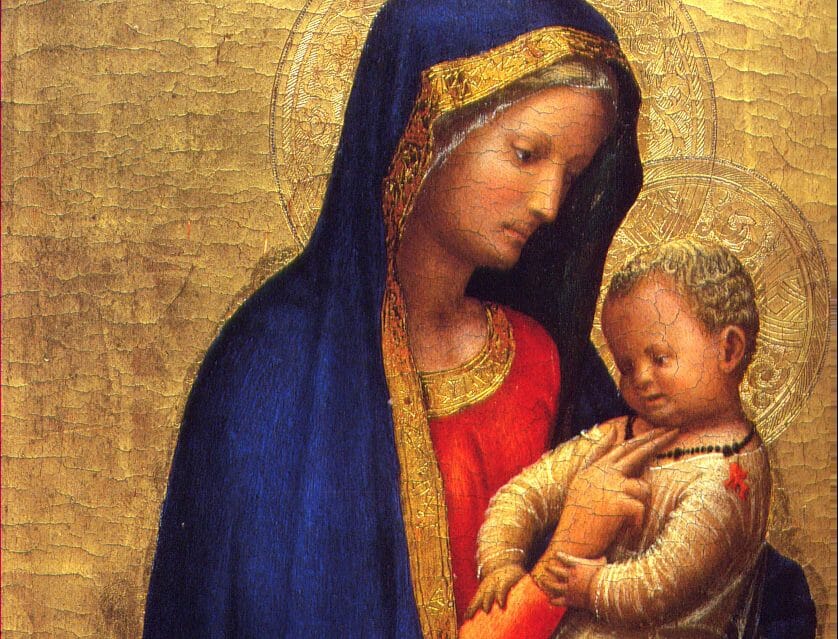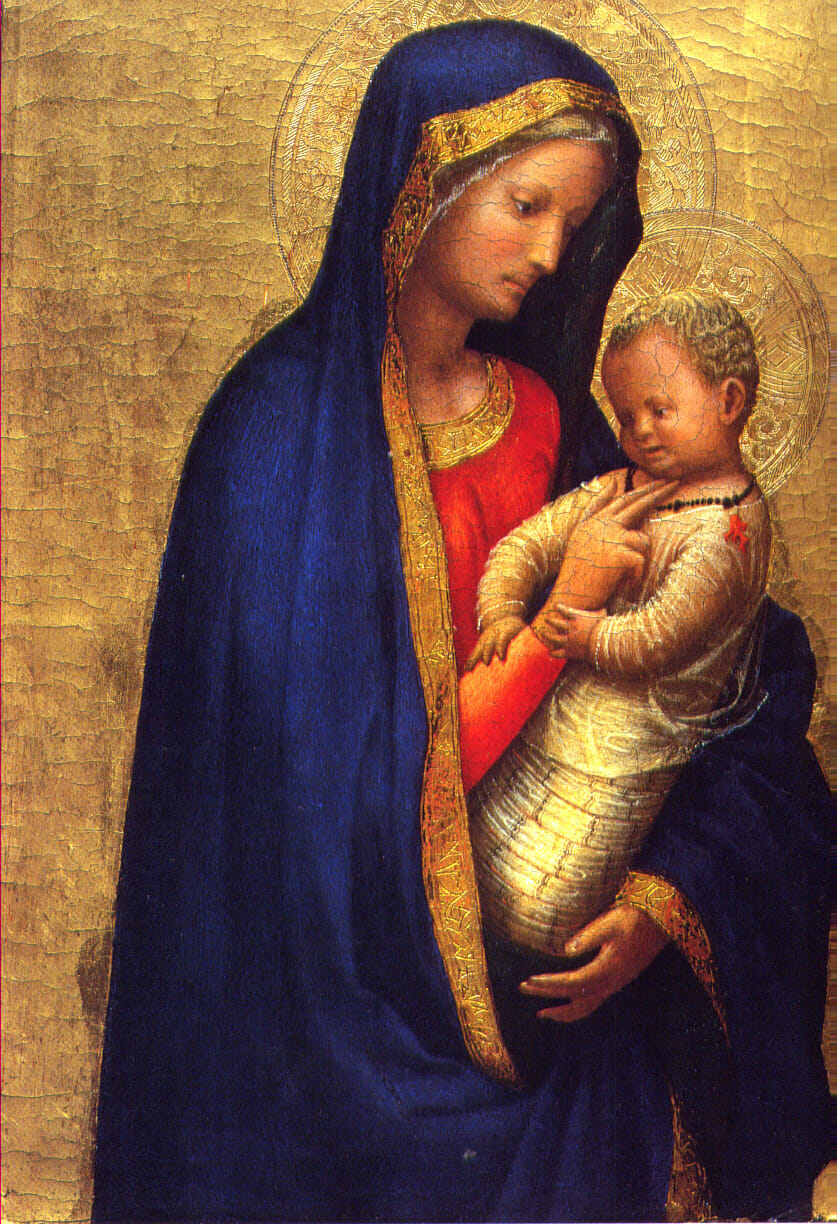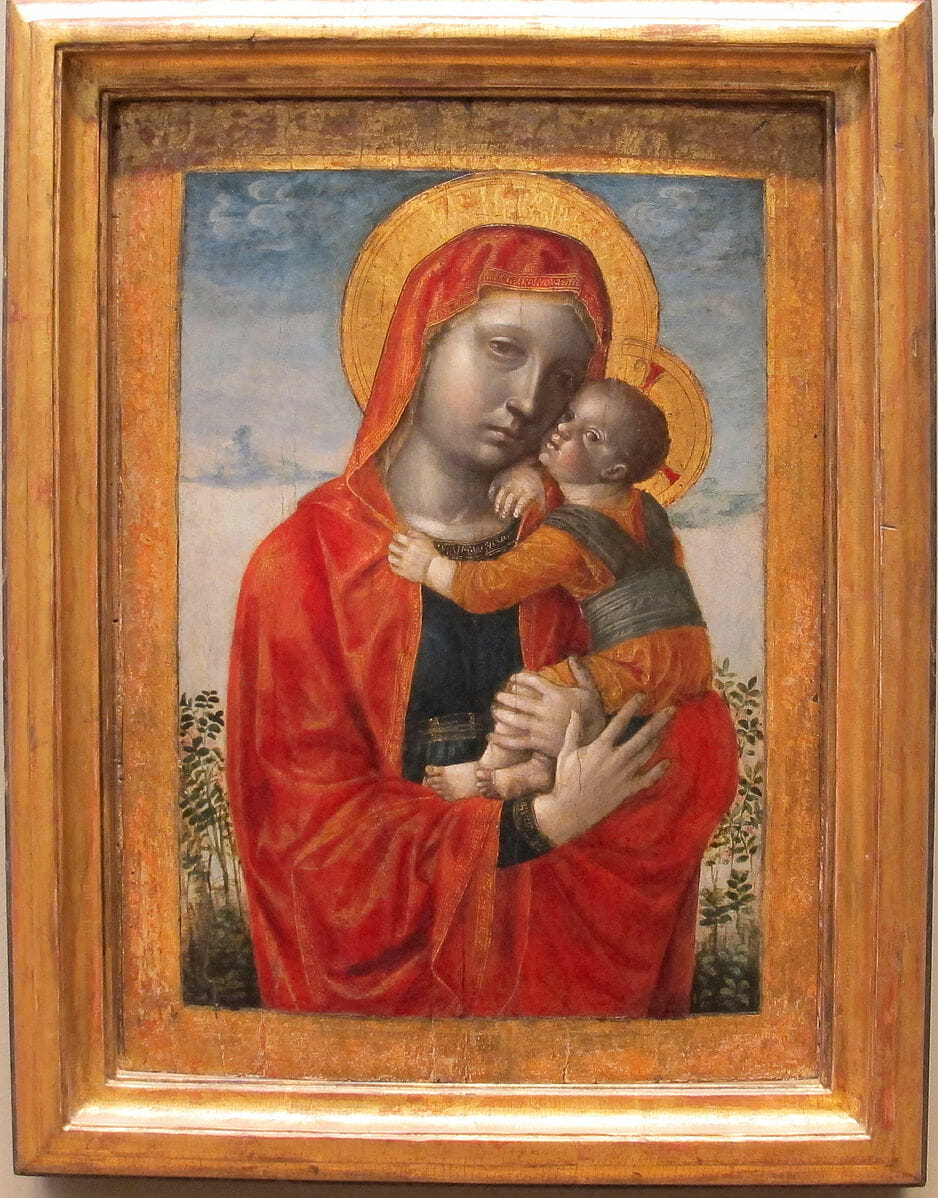
Madonna del Solletico | The magic of the first laughter
Artist
Year
Country
Format
Material/Technique
Masaccio‘s Madonna del Solletico (or Madonna and Child) is a wooden painted panel, done in 1426 for the private use of Cardinal Antonio Casini. It now hangs in the Uffizi Gallery in Florence. On the back of the panel is represented the cardinal’s coat of arms, which is considered reasonable proof of attribution. The work is small and presents a rare iconography, if not a unicum.
It is alleged that the golden background and Mary’s serious face, which foresees her son’s future, are just two canonical aspects of the representation. In that case, it is also true that the rest of the composition is curious. The work represents the passage to a new artistic period in which the sacred icon from the hieratic becomes human.
The Madonna is shown playing with her son in swaddling clothes. She tickles his face so much as to provoke a smile in the child. The gesture is natural, human, familiar and declares the study that Masaccio must have made to build the composition.

Children’s Laughs
The Italian writer for children and theorist Gianni Rodari dedicates a chapter of Grammar of Fantasy to the theme of children’s laughter.
Laughter can be of three different types. The laughter of superiority when the mother puts a teaspoon in the ear performing an action that the child knows is “wrong”. This kind of laughter is linked to the concept of knowledge. The child knows very well that this is not how a teaspoon does. The laughter of aggression arises when the child tries to exorcise something that frightens.
And finally, the laughter of surprise when the child meets something pleasant and unexpected. This one is the laughter of Madonna del Solletico, where Jesus is taken by surprise by the unusual sensation he feels, perhaps for the first time, on his skin.
In Peter Pan, J.M. Barrie describes the first laughter in this way:
When the first baby laughed for the first time, its laugh broke into a thousand pieces, and they all went skipping about, and that was the beginning of fairies.
Tag
Buy a ☕ for Hypercritic








